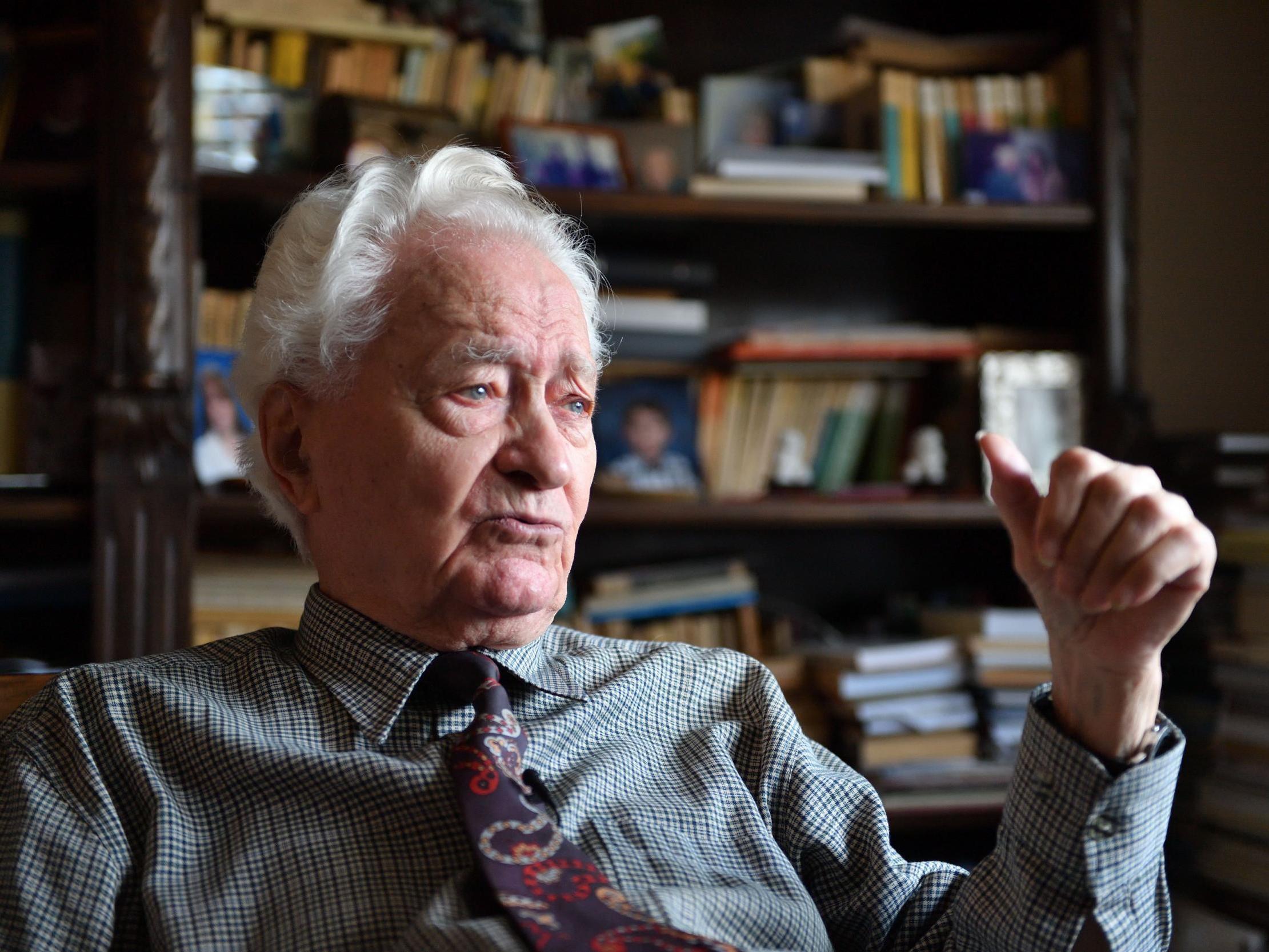Eugeniu Iordachescu: Civil engineer who saved Bucharest’s historic churches by rolling them to safety
When the communist dictatorship was demolishing thousands of buildings in the 1980s, he devised a rail system to relocate the structures

Eugeniu Iordachescu was the Romanian civil engineer who saved historic buildings, notably churches marked for destruction, under the rule of communist dictator Nikolae Ceausescu – by devising a system that lifted them on to railroad tracks and allowed them to be moved out of harm’s way.
In the early 1980s, much of Bucharest was being razed by bulldozers and wrecking balls in a reconstruction and modernisation effort aimed at creating “the first socialist capital for the new socialist man”. More than 40,000 buildings were destroyed under the programme of “systematisation” dubbed “Ceausima”.
At the outset Eugeniu Iordachescu, an engineering professor who also worked for city authorities, found himself drawn to a small Orthodox church named Schitul Maicilor, or the Nuns’ Hermitage. Built around 1726, it was “a jewel that had to be saved no matter the cost”, Iordachescu later said.
Using a system inspired by “the waiter who carries glasses on a tray without spilling a drop”, he devised a method in which a concrete “tray” was placed under the building’s foundations; the church was lifted with hydraulic jacks, and winches, and electric trolleys were used to roll it along a set of rails. Like a train slowly making its way down the tracks, the church was moved more than 800 feet, given a new home in, 1982, behind what is now the headquarters of the Romanian Intelligence Service.
Iordachescu, who has died aged 89, was celebrated as “the engineer of heaven” and Romania’s “guardian angel of churches” for rolling nearly 30 buildings to safety – a bank, a hospital and several apartment buildings, complete with gas and water lines, along with the churches.
While there was a precedent for buildings being disassembled for relocation, there were few models for Iordachescu’s massive moving operations, which extended from Bucharest to include several structures across the Romanian countryside. Less than a decade earlier, the eight-storey Cudecom building in Bogota was moved 95 feet along steel rollers – a feat that paled in comparison to the scale of Iordachescu’s engineering wizardry.
Inspired in part by a trip to North Korea, Ceausescu sought to rebuild entire villages and towns, installing drab apartment blocks and in Bucharest erecting a colossal palace named the House of the Republic, now home to the country’s parliament.
Since coming to power in 1965, Ceausescu tolerated but maintained a strict control on the Romanian Orthodox Church. It leaders, for their part, kept a cosy relationship with the regime and listed Ceausescu’s birthday on the church calendar. With systematisation, the dictator made relatively little effort to spare church buildings and sometimes seemed to target them directly.
For Iordachescu, who often spoke of being guided by God, the churches were sources of religious and historic significance, centuries-old community centres that offered solace in a city that was increasingly devoid of colour, charm and links to the past. One of the city’s oldest buildings, the Mihai Voda Monastery, was built in the 1590s and relocated some 950 feet.
Another structure, the Synodal Palace, weighed 9,000 tons but was lifted onto the rails and moved a few feet each day before settling into place in the shadow of a tall apartment building. Iordachescu’s team finished the job in subzero temperatures to meet a deadline from the state, he said in a documentary, but was forced to demolish a portion of the building after Ceausescu’s wife, Elena, insisted it was still visible from the street.
Nonetheless, the Romanian government paid for each of the relocation projects – perhaps allowing them to go forward, Iordachescu once suggested, because of critical news coverage in the west.
Iordachescu was born in the eastern Romanian city of Braila in 1929. He graduated from the Bucharest Institute of Civil Engineering in 1953, according to a biography by AGIR, a Romanian engineering society, and in 1984 received a doctorate in engineering.
He was married and had two sons.
Iordachescu continued his teaching and engineering work in the years after the Romanian Revolution, which concluded in December 1989 with the execution of the Ceausescus and a grisly announcement on Romanian national radio: “Oh, what wonderful news on this Christmas evening. The Antichrist is dead.”
At the time, Iordachescu was still wrapping up his final relocation project, ensuring St Stephen’s Church, some 200 years old, arrived at its new home unscathed, like all the other churches he had rolled into place.
Eugeniu Iordachescu, engineer, born 8 November 1929, died 4 January 2019
© Washington Post
Subscribe to Independent Premium to bookmark this article
Want to bookmark your favourite articles and stories to read or reference later? Start your Independent Premium subscription today.

Join our commenting forum
Join thought-provoking conversations, follow other Independent readers and see their replies